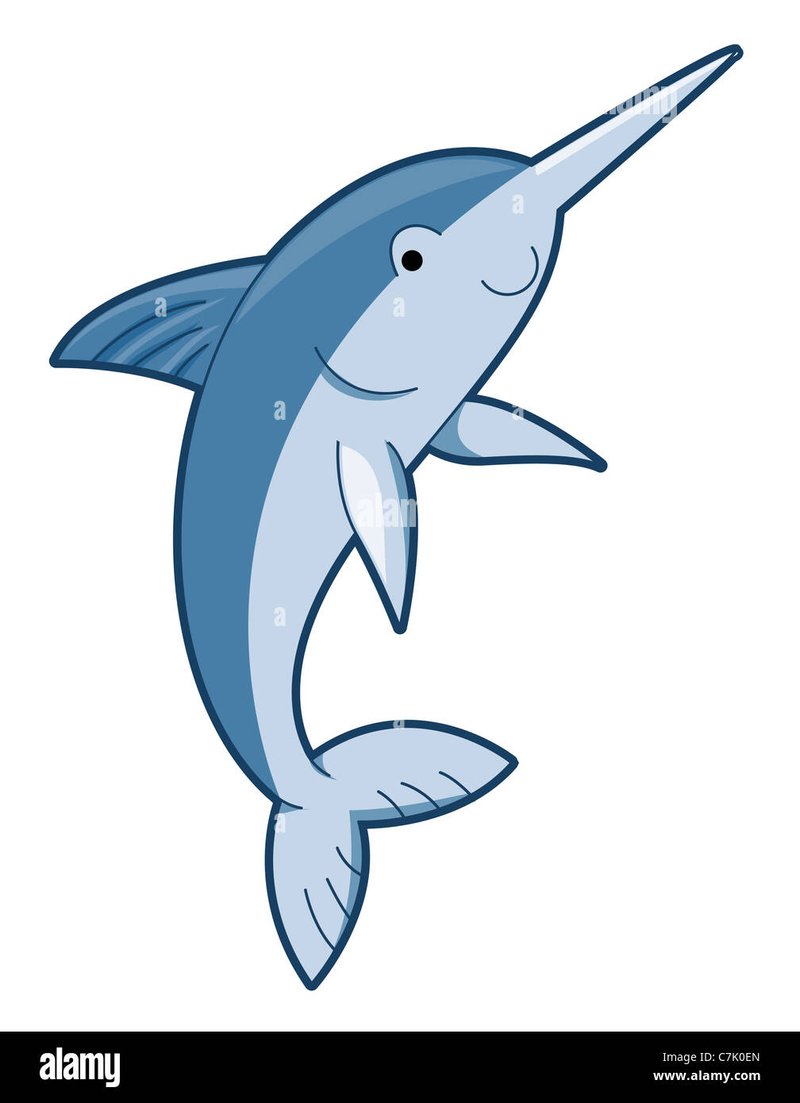
Let’s dive into the depths of how swordfish communicate and navigate their underwater world. They don’t exactly use words like we do, but trust me, their methods are truly impressive. Imagine a world where your surroundings speak to you, giving hints about where to go and what to do. Sound intriguing? Stick around, and you’ll see just how these magnificent fish pull it off.
The Basics of Swordfish Navigation
Swordfish have a unique advantage when it comes to navigating their ocean habitat. They rely heavily on their keen eyesight and sensory organs. Think of their eyes as high-tech cameras, perfectly adapted for spotting prey and obstacles in both bright and dim light. When swimming in deep waters, their eyes help them discern shapes and shadows, guiding them gracefully through their environment.
Another crucial factor in navigation is the temperature of the water. Swordfish often swim in different layers of the ocean, each with varying temperatures. By sensing changes in temperature, they can figure out where they are and where they want to go. It’s like having a secret map in your head that tells you which way to turn based on how the air feels.
Additionally, swordfish use the Earth’s magnetic field for navigation, much like how birds do during migration. They can sense magnetic fields and use this information to orient themselves in the vast expanse of the ocean. It’s an impressive feat, almost like having a built-in compass!
How Swordfish Use Their Unique Anatomy for Navigation
You might be wondering what makes swordfish so distinctive when it comes to navigation. One standout feature is their long, flat bill, which they use for hunting but also for maneuvering through tight spots. This bill acts like a rudder, helping them steer adeptly through complex underwater landscapes. Imagine trying to navigate a crowded street with a skateboard; you’d want something to help you steer around obstacles!
In addition to their bill, swordfish have a lateral line system—a series of sensory organs running down each side of their body. This helps them detect vibrations in the water. So, when another fish swims by or when there are changes in water currents, they can sense this movement. It’s like having your ear to the ground, alerting you to what’s happening around you.
The combination of their bill and lateral line system makes swordfish some of the best navigators in the ocean. They can spot potential dangers and prey while maintaining speed and agility. Every movement is calculated, making them efficient hunters and travelers.
Communication Among Swordfish
Now, let’s talk about how swordfish communicate in the deep blue sea. Unlike humans, swordfish don’t use sounds or words. Instead, they rely on body language and color changes. When a swordfish feels threatened, it might change color or alter its swimming patterns to signal to others. It’s like a subtle dance of signals that tells other fish, “Hey, I’m not feeling safe right now!”
Additionally, swordfish have been observed engaging in a bit of playful behavior, like breaching the surface or leaping through the air. This can serve as a method of communication among themselves. If you’ve ever seen dolphins playing in the waves, you know it’s not just for fun; it can be a way to express themselves and bond with others.
Moreover, these fish can also use their speed and agility to communicate during mating displays. Male swordfish may perform impressive swimming maneuvers to attract females. It’s a bit like impressing a date with your best moves on the dance floor. The more skilled the maneuvers, the more attractive they may seem!
The Role of Electrosensation in Navigation
Have you ever heard of electrosensation? It’s a fascinating sense that helps many fish, including swordfish, navigate their world. Swordfish possess specialized electroreceptor organs called ampullae of Lorenzini. These organs can detect the electric fields created by other animals, especially prey. Imagine being able to feel the tiny electric signals from a fish hiding in the sand—pretty cool, right?
This ability is incredibly useful, especially in murky waters where visibility is low. When swordfish hunt, they can hone in on the faint electrical signals emitted by their prey. It’s like having a secret weapon that allows them to find food even when it’s hidden. This skill also aids in navigation by helping them sense the environment around them.
Because they can detect changes in electric fields, swordfish can also avoid obstacles and other predators. Think about it: if you could feel something approaching you before seeing it, wouldn’t that give you a huge advantage? That’s what makes these fish so exceptional in their watery homes.
Environmental Factors Affecting Navigation
Swordfish navigation isn’t just about their anatomy and skills; it’s also about the environment. Changes in water temperature, salinity, and currents can significantly affect how they navigate. For instance, when the ocean warms up or cools down, it can impact the movement of prey and even other predators, altering the swordfish’s route.
Ocean currents can also play a vital role. Swordfish are known to travel long distances, and sometimes they have to swim against the current. This can be exhausting, but it’s a necessary part of their migratory patterns. Think about riding a bike uphill—it’s hard work, but the payoff is worth it when you reach the top!
Additionally, environmental factors such as light penetration can influence where swordfish choose to swim. They often hunt in areas where light meets dark, called the twilight zone. Here, prey fish are abundant, and the swordfish can use their hunting skills to catch dinner while still navigating effectively.
The Importance of Communication and Navigation for Survival
Ultimately, the way swordfish navigate and communicate is vital for their survival. Efficient navigation helps them find food, avoid predators, and migrate across vast oceans. It’s essential for their growth and reproduction, allowing them to thrive in different habitats.
Their communication skills also play a crucial role in social interaction, especially during mating seasons. When swordfish can effectively communicate and navigate, it boosts their chances of reproducing and raising healthy offspring. Imagine trying to date without knowing how to communicate with others—it would be pretty tough!
By understanding how swordfish navigate and communicate, we not only gain insight into their fascinating lives but also learn how ecosystems function. Each species has its own role, and the success of swordfish contributes to the balance of marine life.
Swordfish are remarkable creatures with unique ways of navigating and communicating in the ocean. Their impressive eyesight, the ability to detect electric fields, and their playful gestures all contribute to their survival. Just like you might depend on various tools and skills to navigate your own life, swordfish have developed a suite of natural abilities to thrive.
Their journey through the oceans is a testament to the beauty of adaptation and communication in nature. Understanding these instincts not only deepens our appreciation for swordfish but also highlights the intricate web of life in our oceans. So, next time you think about swordfish, remember that there’s so much more going on beneath the surface than meets the eye!

